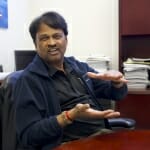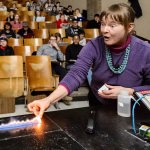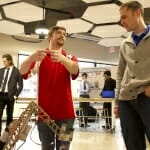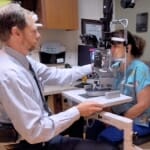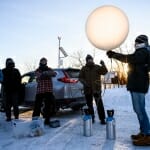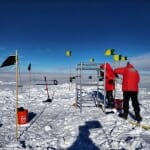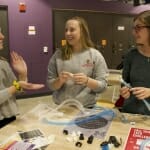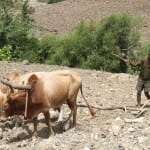Category Science & Technology
As Lake Michigan rises, bluffs collapse and geologists explore
UW-Madison researchers are more than one year into a project sponsored by Wisconsin Sea Grant aimed at a better understanding how the bluffs erode, and what triggers their collapse. Read More
He professes protein: Srinivasan Damodaran has thoughts for food
If you have a protein that needs a bit of self-improvement, Damodaran may be your guru. An expert in soy and milk protein, he’s invented soy-based glues and plant-based absorbents for industrial cleanups and diapers. Read More
Professors recognized by American Chemical Society
Five UW–Madison professors have earned prestigious awards from the American Chemical Society — the largest scientific society in the world. Three will be honored at the ACS National Meeting, and two will deliver awards addresses at the Arthur C. Cope Symposium. Read More
Reddit competes to visualize Madison’s prized Lake Mendota ice data
Data visualizations generated by a Reddit competition reveal a concerning trend that’s been known to scientists at UW–Madison and elsewhere for decades: ice is disappearing on Lake Mendota. Read More
Chemistry instructor finds ‘dream job’ helping students persevere
Matt Bowman has guided some 3,500 students through the demanding course of organic chemistry — a requirement for many majors. His warmness, energy and humor have won him fans. Read More
Cell component breakdown suggests possible treatment for multiple neural disorders
New UW–Madison research provides the first direct evidence that mitochondria dysfunction contributes to fragile X and autism, raising hope for new therapeutic developments. Read More
Engineers’ projects in focus as campus makerspace holds first “reverse career fair”
“It’s a great way for students who have been making a wide range of projects and prototypes to show them off," says the event coordinator. Read More
Video: Stem cells, lab to clinic
David Gamm, director of the McPherson Eye Research Institute, and Forward Bio Institute director Bill Murphy explain how stem cell scientists at UW–Madison are working with industry to put scientific breakthroughs on the path to helping patients. Read More
Citizen science monitoring program Journey North finds home at Arboretum
Journey North has more than 60,000 registered participants in the United States, Canada and Mexico. People report sightings from the field, view maps, take photographs and submit observations. Read More
UW Women at 150: Computer scientist Thelma Estrin
Thelma Estrin was an early pioneer of the field of medical informatics — the now commonplace practice of applying computers to medical research and treatment. She also was something of a trailblazer for women hoping to pursue careers in the sciences. Read More
Microbes hitched to insects provide a rich source of new antibiotics
A UW–Madison research team found that insect-borne microbes often outperformed soil bacteria in stopping some of the most common and dangerous antibiotic-resistant pathogens. Read More
Hardy scientists launch weather balloon in bitter cold
Professor of Atmospheric and Oceanic Sciences Grant Petty and a group of students launch a helium-filled weather balloon from frozen Lake Mendota at sunrise on Jan. 31. Read More
As the climate warms, tens of thousands of lakes may spend winters ice free
A new study from an international team of researchers, including at UW–Madison, shows that many northern latitude lakes are at risk of experiencing some ice-free winters in the coming decades. Read More
Undergrads design ventilator device; form company to aid newborns during surgery
Undergraduates in biomedical engineering created an improved "wye" that connects airway tubes for infants during surgery. They've applied for a provisional patent. Read More
As climate heats up, rising rainfall averages hide crop-killing droughts
Research performed in the Ethiopian highlands shows that even in years with above average rainfall, crops can be severely reduced by drought early in the growing season, when seeds must sprout and get established. Read More
Gamma ray telescope ready for prime time
A new telescope, part of an international effort to develop and build the world’s largest, most sensitive gamma-ray detector, was unveiled to the public Thursday. UW–Madison scientists developed a camera at the heart of the telescope. Read More
Human respiratory viruses continue to spread in wild chimpanzees
Less than two years after the first report of wild chimpanzees in Uganda dying as a result of a human “common cold” virus, a new study has identified two other respiratory viruses of human origin in chimpanzee groups in the same forest. Read More
New method assesses lead hazard in soil
UW-Madison researchers describe a way to use a common, low-cost soil test to determine how much of the lead is bioaccessible, and therefore dangerous. Read More


